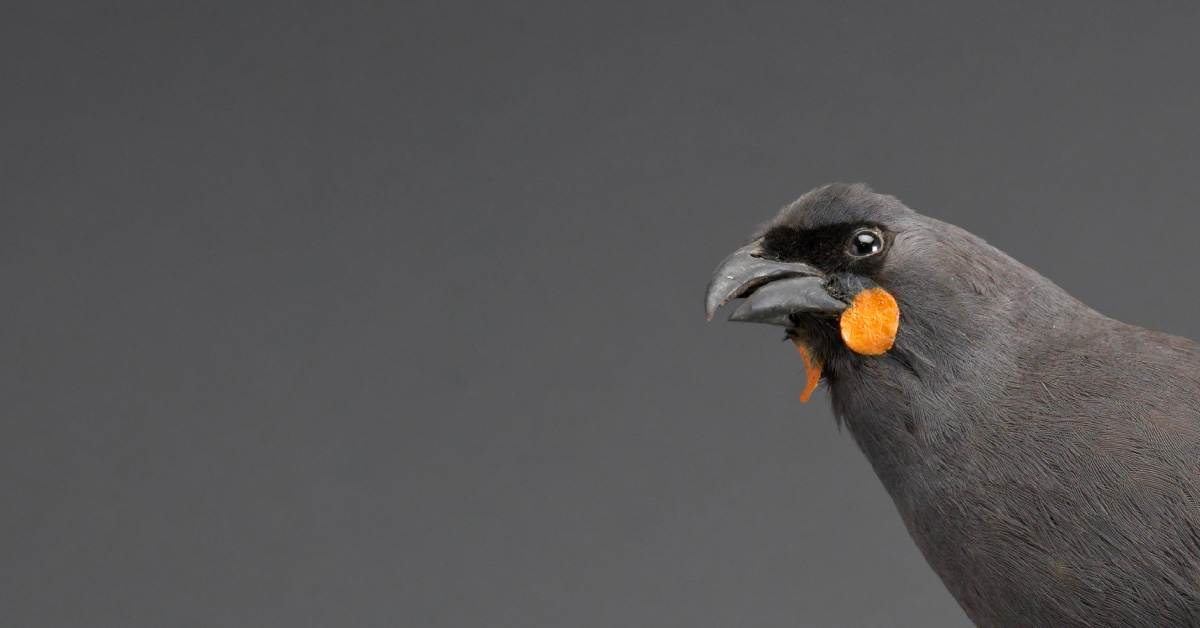
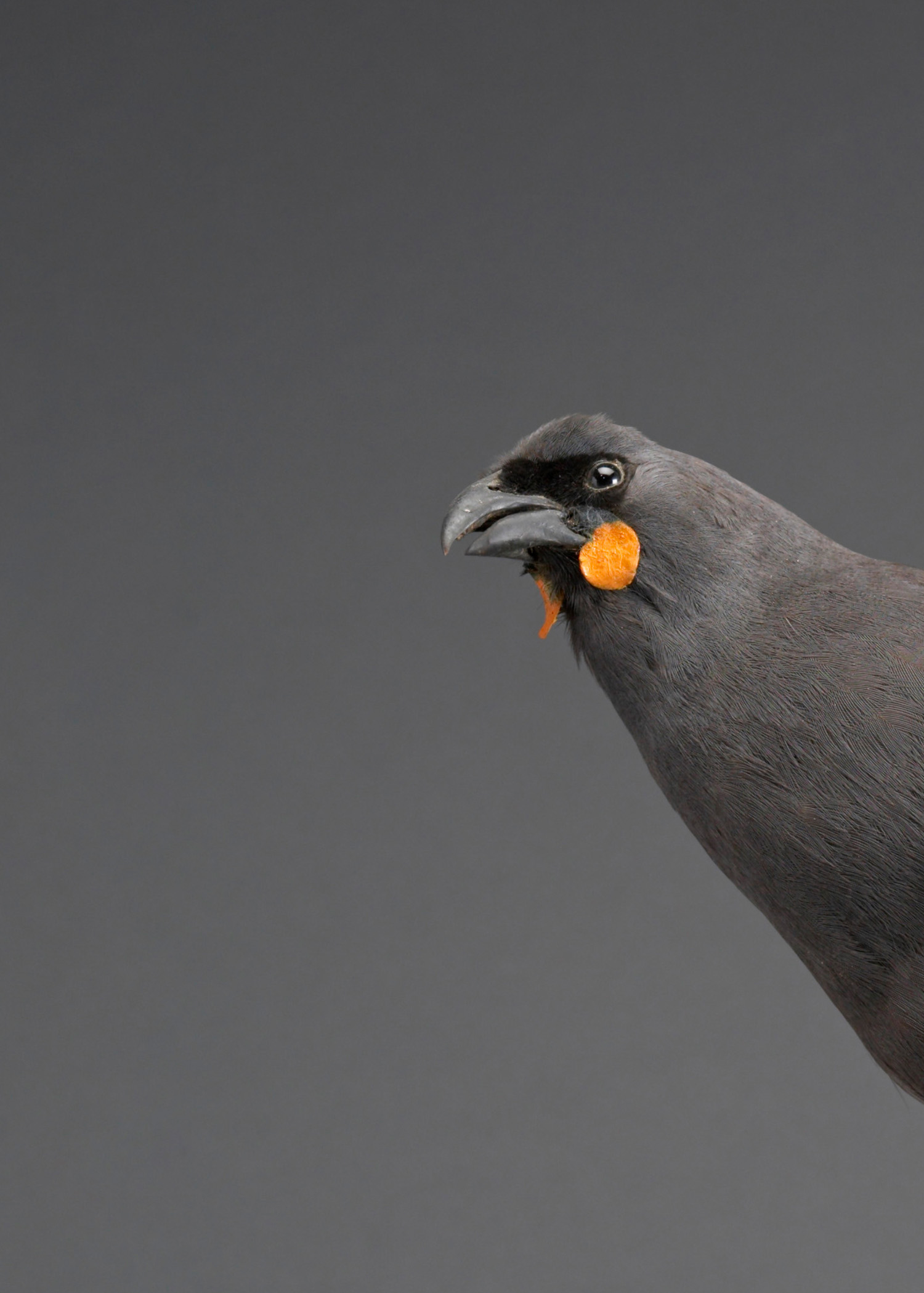
Chasing the Grey Ghost
The song of the South Island kōkako is said to have been one of the most beautiful sounds of the forest, but by 1900 it was all but gone. The species was finally declared extinct more than a decade ago, yet people keep hearing its haunting call and seeing glimpses of the bird dubbed the grey ghost. Some have spent their lives searching for elusive proof that it survives.
By George Driver
I sat alone in the forest, perched on a rotting tree trunk, listening for a bird that may not exist. The sun filtered down through the beech trees above me, a light breeze sending the occasional shower down from leaves still holding onto last night’s rain. As my mind wandered, I came back to my mantra: “I’m sitting in the forest, listening . . .”
There’s the “kekekeke” of South Island robin, hopping along the forest floor; the high-pitched “cheep cheep” of rifleman peeking around branches; the chatter of a fantail flitting in the distance; the chime of a bellbird up in the canopy. And then, high above, I hear a haunting call, the “keeeaaa, keeeaaa” of the world’s only mountain parrot echoing through the valley. Beneath it all, the hiss of the Blue River keeps time like brushes on a snare drum, out of sight far below. But there’s something missing in this chorus, which I strain my ears to hear. The South Island kōkako once played baritone in this choir. West Coast explorer Charles Douglas described its call as “softer and sweeter than an aeolian harp or a well-toned clarionet” while others have likened it to the “bongs” of cathedral bells. Its song once filled this forest and is now likely gone forever. But there’s a very slim chance it might be here still. I’d come to the Blue River valley, near Makarora, to find out.”
Between 1965 and 1967, a farmhand named K McBride claims to have seen South Island kōkako on three consecutive occasions while hunting in Tiel Creek (often misspelt Teal Creek), a hanging valley opposite Makarora township, not far from Haast Pass. He recorded seeing a dark grey bird with a jet black head a few metres from him in the beech forest. “One could imagine it was wearing a mask,” he wrote in the journal, Notornis. “Its wattles, which were quite prominent, were putty coloured, just a light fawn, but it was undoubtedly a kōkako.” A search party scoured the valley in 1970 and again in 1981, but there was no sign of the bird. For 40 years, this was the last sighting of the South Island kōkako deemed authentic by the ornithological society, Birds New Zealand.
But in the last decade there’s been renewed hope. Four unverified sightings have been recorded of kōkako-like birds in the valleys of the nearby Gillespie Pass Circuit tramping track. And a couple of encounters have been recorded in the Blue Valley and nearby Blue Pools, 10km north of Tiel Creek. It’s here I’d come a-kōkako huntin’.
It’s just one of dozens of locations around the South Island where a total of more than 300 kōkako encounters have been reported in the last decade. Some have suggested these encounters are no more credible than sightings of Bigfoot. Others have spent decades trying to find the bird after having an encounter themselves, their lives forever changed by hearing the melancholic call of the grey ghost.
THE VANISHING
I had my first encounter with the South Island kōkako a few weeks earlier. One claw wrapped around a wooden perch, one poised in the air, it peered at me in profile, head turned quizzically to reveal its orange wattles tucked under the chin. “This is one of the saddest places in the museum,” Otago Museum assistant curator Kane Fleury told me. Surrounding the kōkako was a who’s who of locally — or entirely — extinct birds: moa, South Island piopio, South Island saddleback, laughing owl, kākāpo and the South Island kōkako.
The species was once abundant, found from the Marlborough Sounds to Rakiura/Stewart Island. Larger than a tūī, smaller than a kererū, both North Island and South Island kōkako are blue-grey birds with a black bandit-like mask around the eyes and two colourful wattles under the beak. The main difference is the South Island bird has/had orange wattles, while the North Island species’ wattles are blue. They’re two of the country’s five native wattlebirds, the others being the now-extinct huia and the North and South Island saddleback, which cling on in predator-free reserves.”
Captain James Cook’s crew shot a South Island kōkako specimen on his first visit to New Zealand in 1769–70 and more were collected on Cook’s second voyage. The South Island species was actually described before the North Island one. By the mid-1800s they were apparently still “very plentiful” on Dunedin’s Mount Cargill and on Banks Peninsula.
There are only a handful of surviving descriptions, but they sound like real characters. Charles Douglas wrote that the birds “prefer to run about the limbs and trunks of the low scrub, they never actually walk, but run with a strolling sort of a gait that is very funny”. He adds that they “can be caught either with a snare, or by applying salt to their tales”. But it’s their call that was most notable. He says it was “indescribably mournful”. “Their notes are very few, but are the sweetest and most mellow-toned I ever heard a bird produce.”
In the 1888 book, A History of New Zealand Birds, famed ornithologist Sir Walter Buller wrote the South Island kōkako had been seen “travelling through the bush on foot, Indian fashion, sometimes as many as twenty of them in single file, passing rapidly over the ground by a succession of hops, and following their leader like a flock of sheep; for, if the first bird should have occasion to leap over a stone or fallen tree in the line of march, every bird in the procession follows suit accordingly!”
An article in the Evening Post from 1926 also describes how Buller kept a kōkako in a large cage in his library “for many months” during the 1890s and that it “partook readily of cooked potatoes and boiled rice, and soaked bread”.”
In 1884, Austrian taxidermist — and infamous Māori graverobber — Andreas Reischek collected (killed) a number of South Island kōkako and noted they were “rather dry for eating”. He wrote that after shooting one bird, its mate appeared and he became filled with remorse. “To my astonishment, instead of flying away when it saw me, the poor thing went to its dead companion, hopping around and calling, evidently in a state of great agitation. I felt so much for this bird, that I was very sorry I had shot its mate, and let it go.”
As the South Island’s forests began to be cleared for farming, the bird retreated to the mountains. Near the end of the century, Buller noted that the species was “destined ere long to vanish from the land”.
Its proclivity for marching along the ground was probably a factor in its demise. In the 1880s, settlers began to introduce mustelids (stoats, ferrets and weasels) to control the burgeoning rabbit population, which had been introduced 50 years earlier. Ship rats became established at roughly the same time, and the tree-climbing vermin proved a far greater threat to birds than the kiore (Pacific rat) and Norway rats which had been introduced by Māori and Captain Cook respectively. Te Papa bird curator Colin Miskelly says these new arrivals decimated native species.”
“From 1880, this tide of sharp teeth went right through New Zealand’s forests and we lost nearly everything at that point,” Miskelly says. “If you go back to the 1890s, people even thought tūī, bellbird and kererū were heading towards extinction.” Kōkako, along with most other native birds, also weren’t entirely protected from hunting until 1906, and avid specimen collectors were also a factor in the decline of some species.
The wattlebirds proved particularly pest-prone. South Island saddleback were extinct from the mainland by about 1900, while the last sighting of a huia was in the Tararua Range in 1907. Miskelly says the last South Island kōkako specimens were captured in the late 1800s and he believes the species was likely extinct in the South Island by 1900. They were still reported as being “pretty common” on Stewart Island in 1907, which was still free of mustelids. But sightings there began to dwindle too, with the last expert sighting occurring in the 1930s.
The North Island kōkako clung on in Pureora Forest near Taupo and a handful of other patches — it’s thought the South Island species was more vulnerable due to the boom in predators that follows beech mast events.
It seems to have disappeared almost without mention. A search through the newspaper archive, Papers Past, reveals few records of the South Island kōkako — or orange-wattled crow as it was known. In 1930, an article published in the Otago Daily Times — headed Maori Nature Notes — says it was probably extinct. “Tis so long since one has seen or heard them that their once familiar tuneful whistle is almost forgotten.” Although, another report from 1929 records someone in Invercargill being charged with allegedly skinning a kōkako which, if true, may have been one of the last of the species.”
THE RESURRECTION
By the start of the 21st century, it seemed all hope was lost. While a number of sightings continued, the last accepted by Birds New Zealand was that from the Makarora farmhand in 1967. In 2005, the Department of Conservation (DOC) finally declared the species extinct. The South Island kōkako joined the 58 bird species that have gone since humans arrived in the country around 800 years ago.
Then something remarkable happened. In 2012, DOC reclassified it as “data deficient” and the bird was seemingly resurrected. A department report said this meant the species was most likely “functionally extinct”, but “we are not convinced beyond reasonable doubt that the last individual of these taxa have died”. The following year, Birds New Zealand accepted a sighting near Reefton from 2007, making headlines around the world. Len Turner was conducting pest control at Rainy Creek, near a disused Reefton gold mine, when he heard “a haunting resonant call” he had never heard before. Nortonis records that soon saw a steely-grey bird with “fleshy orange-brown” wattles. The following day he took a friend, Peter Rudolf, who was an experienced North Island kōkako observer, and they saw the same bird “making giant leaps up the trunk of a rimu” then glide off. The South Island kōkako was back, or so it seemed.
Colin Miskelly isn’t so sure. While it has often been reported that the Reefton sighting led to the bird’s status being reassessed, he says this isn’t quite correct. He says the reclassification was more of a bureaucratic change than a resurrection. He would know. Before getting a job at Te Papa in 2019, he worked for DOC for almost two decades, and in 2010 he was convener of DOC’s Threat Ranking Panel that decides which birds are endangered or extinct. He says this panel changed the criteria for a species to be “extinct” to be consistent with international standards. The new criteria states a species is extinct “when there is no reasonable doubt that the last individual has died” and only after “exhaustive surveys” of its known range have failed. Intriguingly, when the South Island kōkako was first declared extinct, Miskelly says it was a “political decision” made by DOC.
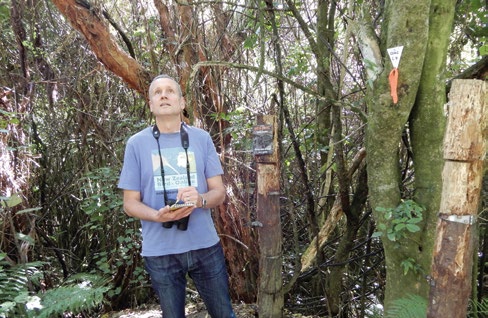
Colin Miskelly believes South Island kōkako likely went extinct from the mainland around a century ago or more and says he’s seen no evidence to persuade him otherwise.
“They’d spent a lot of money basically chasing shadows and had decided there’s not enough evidence this thing exists and, rather than being forever pressured to follow up every report, they basically made the decision that this bird is extinct.”
At the same time, a couple of kōkako searchers compiled a list of 241 sightings reported between 1990 and 2012 and submitted the 13 most robust encounters to DOC’s threat-ranking panel. Subsequently, because there had been no exhaustive surveys — and people kept seeing the bird — DOC changed its status to allow for the possibility that it’s actually alive.
This in turn lowered the bar for a sighting to be classed as “authentic”. For an extinct bird, a sighting can only be accepted by Birds New Zealand if its record-appraisal committee votes unanimously in favour. But a sighting of an extant bird only requires a simple majority to be given the stamp of authenticity. The 2007 Reefton sighting had failed to be approved when the bird was extinct, but with the bar lowered it gained the required three votes — Miskelly was one of the two opposed.
“I’m convenor of the panel, so I’m the person whose name got associated with it, but I didn’t support it. That’s why I haven’t gone out trumpeting that they’ve been rediscovered, because I don’t believe it.”
No other sightings have gained this majority since. But for dozens, possibly hundreds of people, they don’t need the approval of the ornithological society to know the bird exists. They are certain they’ve seen it.
THE BELIEVERS
If searching for the South Island kōkako was a religion, then Rhys Buckingham would be its most devout monk. He was converted in 1977, when he heard a call that changed his life. He had recently graduated with a degree in botany and zoology from the University of Otago and was tramping around Lake Monowai in Fiordland when he heard it.”
“It was like a series of cathedral bells slowly chiming,” Buckingham says. “I’ll never forget hearing that call.” He spent a few days searching for the source of the song. While he never found it, he’s sure it was kōkako.
A couple of years later, while working cutting tracks and writing guidebooks on Rakiura, he was taunted by a resident who said he knew where kōkako were on the island, but wasn’t going to tell Buckingham. “Great guy, but a stubborn old bastard,” Buckingham recalls. Undeterred, he went bush for three months in the remote north-west corner of the island, searching for the grey ghost. After weeks in the bush, “blow me down, I heard this beautiful organ call that could only be kōkako. It was mesmerising.”
He still couldn’t catch a glimpse of the bird, but Buckingham was hooked. He’s spent up to half of each year since searching for South Island kōkako. He finally got his first sighting back on Stewart Island a couple of years later, near where he earlier heard that call, when a kōkako flew above him. “I just about dropped.”
Buckingham didn’t see its wattles but is convinced it was a kōkako. A few years later, while in the North Island, he saw a North Island kōkako that looked and behaved almost identically. He claims to have seen the bird three more times — again on Stewart Island, once near Murchison and a few glimpses near Lake Moeraki, north of Haast — the last of which was in 2010. “Since then my luck has been down on me.”
But he hasn’t given up. At 74, he’s still staking out a patch in Abel Tasman National Park where there have been reported calls. “I suppose a bit of insanity comes into it, but I love the bush and I just have to try and save this bird from extinction.”
The closest proof that the South island kōkako still exists came in 1986, when Buckingham was part of a Wildlife Service team searching for the bird on Stewart Island that found a blue-grey feather after hearing a kōkako-like call. The feather was taken to the Otago Museum, where Assistant Director John Darby analysed it and believed it could be kōkako. It was then sent to an expert in the Netherlands for further analysis but then disappeared for several years. Colin Miskelly later found it in a letter among a collection of correspondence at Te Papa, but there were two unlabelled feathers in the envelope. In the letter, the expert said he believed it was from a New Zealand wattlebird. But when the feather was DNA tested, it came back as being from a blackbird. Confoundingly, the morphology of the feather doesn’t match that of a blackbird — it looks like kōkako.
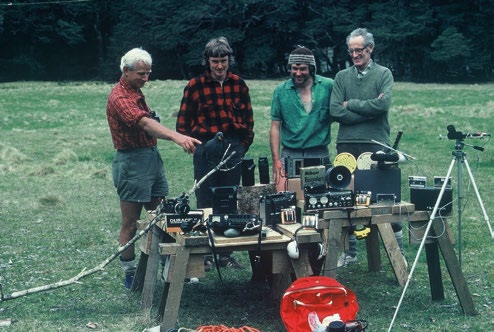
South Island kōkako searchers (from left) Peter Child, Graeme Elliott, Rhys Buckingham and Johnny Kendrick at Fraser Creek near the Greenstone-Caples Track near Lake Wakatipu in the early 1980s. Photo courtesy Rhys Buckingham.
“We’re still looking into it,” Miskelly says. “It’s a work in progress, but the problem is the genetic information we got back is incompatible with the morphology of it and so we don’t have a clear answer on what it is. It’s a mess really. It should have been registered as a specimen when it turned up rather than being posted around the world .”
There have been other bizarre incidents. A recording that Buckingham heard and says was “unquestionably” a South Island kōkako call was destroyed in a house fire 2002. A photograph apparently taken of the bird near Haast in the 1950s has gone missing without a trace (there are no surviving photos of the bird). Once, when Buckingham saw a kōkako, he reached into his pocket for his camera to find he had lost it along the way.
Despite the setbacks, Buckingham is now more optimistic they will find it as more effort is going into the search than ever before. In 2010, Buckingham and fellow searchers Ron Nilsson and Nigel Babbage set up the South Island Kōkako Charitable Trust dedicated to coordinating and funding the search. Since 2017, it has offered a $10,000 reward, partly funded by the Morgan Foundation, for any information that conclusively proves the bird’s still alive. The trust has now received 335 reports of encounters spanning the length of the South Island, 117 of which are classified as “possible” and 76 as “probable”. The number of believers also appears to be growing.
Retired school teacher Bruce Reid, 75, started searching for the kōkako five years ago after reading about it in the paper. He teamed up with fellow retiree Don Sullivan, 76, and the pair have been hunting around the Nelson-Tasman region ever since. “We’re both desperate to prove that it still survives,” he says.
They’ve focused on the Heaphy Track Great Walk, after more than 30 encounters were reported there, installing about 30 cameras on the trail, which they’ve funded themselves at about $200 each. Reid heard his first call about four years ago.
“We call them bongs,” he says. “It stops you in your tracks when you hear it. It’s unlike anything else.”
Then came a sighting. In March this year he was on the Heaphy with another searcher, Peter Shaw, when he saw a grey bird — larger than a tūī, smaller than a kererū — fly from a dead tree trunk and up into the forest canopy. He reached for his camera, but by the time it was trained on the tree the bird was gone.
“We couldn’t think of any other bird that it could be. It was over in seconds but it’s still so clear in my head, it’s burned in my brain now. It was unbelievable.”
The pair waited, camera poised, for it to remerge but it never showed. “We now have five trail cameras trained on that tree and we’re due to go back next month to retrieve the SD cards which might have something for us.”
They’ve got further cameras in the Graham Valley, near Mt Arthur in Kahurangi National Park, after a sighting by a local farmer, and in the nearby Cobb Valley. At the other end of the South Island, other searchers have placed cameras near the Hump Ridge Track after a sighting there last year.
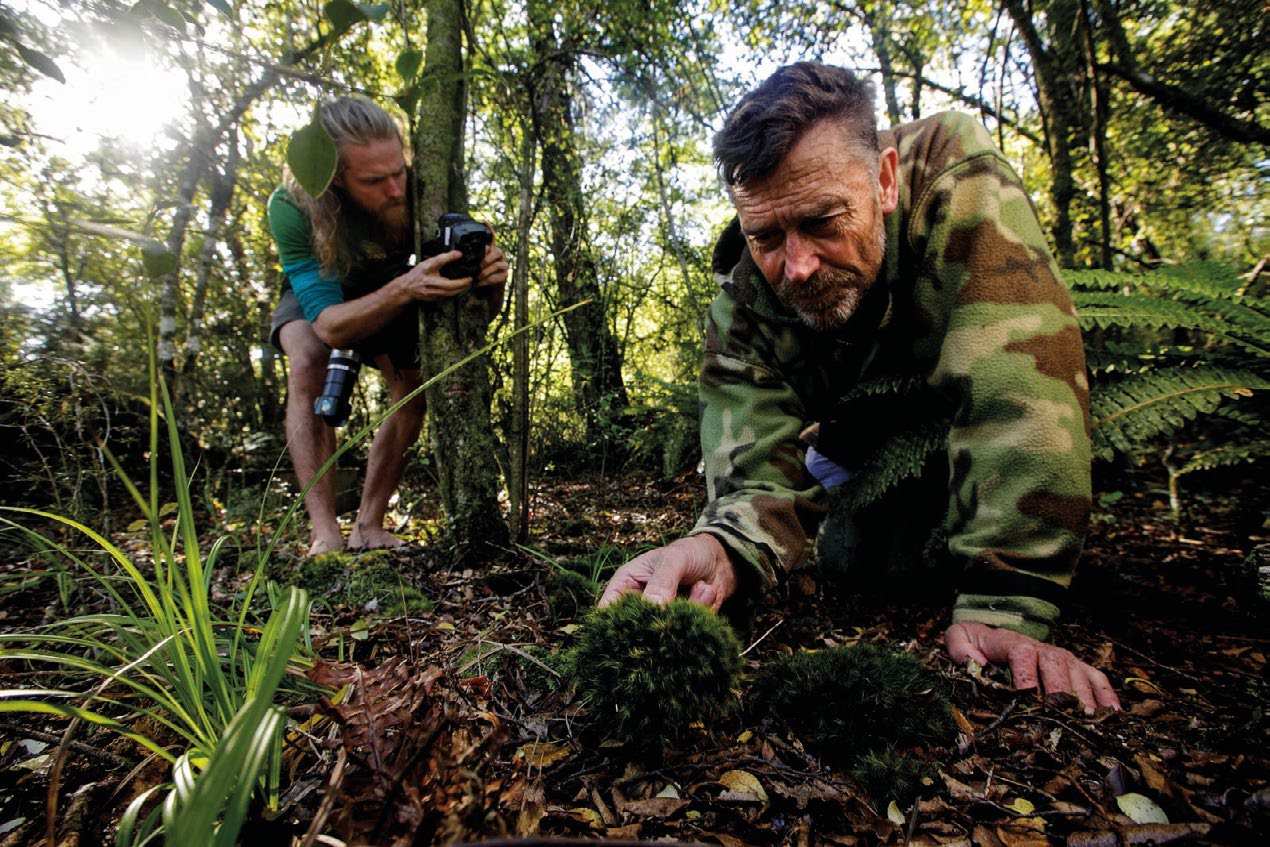
South Island kōkako hunter Geo” Reid installs a camera trap while Rhys Buckingham inspects some disturbed moss which he believes is a sign of kōkako grubbing.
THE NEXT FRONTIER
In an office in Victoria University of Wellington’s Cotton Building, mathematics professor Stephen Marsland is also hunting for the kōkako, but from the comfort of his desk. Marsland spent a decade developing a computer program that can recognise specific bird calls from audio recordings, picking out a single tune among the avian cacophony of the bush. DOC uses the program, AviaNZ, to detect kiwi and other species in remote locations. A year ago he received a $50,000 grant from the National Geographic Society to use it to find South Island kōkako and wild kākāpō (the only known populations are in reserves).
Last year, a team placed 90 microphones around the South Island in locations of previous sightings and recorded about 5000 hours of audio over two weeks. The audio has now been analysed, and Marsland says they’ve found “literally nothing”. It’s not clear whether the program needs tweaking to pick up kōkako or if it’s simply not out there. Training a computer to recognise a specific bird call is challenging enough, Marsland says, but trying to detect a bird’s call when you’re not even sure what it sounds like is near impossible. They’ve made a best-guess based on the North Island kōkako call, but no one’s quite sure if it’s right. Marsland, however, still believes there’s a chance the South Island kōkako survives and works as an advisor on the kōkako trust, analysing their audio recordings.
“If I thought there was no chance I wouldn’t be doing this,” Marsland says. “I’m not interested in wasting anyone else’s time, money or carbon. But I’m not optimistic about it.”
Other scientists are looking in the water for the grey ghost. When animals shed their skin, fur, feathers or poop, scraps of their DNA end up in waterways. This is called environmental DNA, or eDNA, and a water sample can be analysed to provide a profile of the species present in a catchment.
It’s become a game-changer for finding rare species. In August, eDNA testing unexpectedly found native long-tailed bats in the Styx River catchment in Christchurch. The species hadn’t been recorded in the city since 1885. Overseas, eDNA has been used to rediscover species believed to be extinct and has even been used by a University of Otago researcher to find out if the Loch Ness monster — or another large reptilian — exists in the Scottish lake (so far, Nessie’s still a myth).
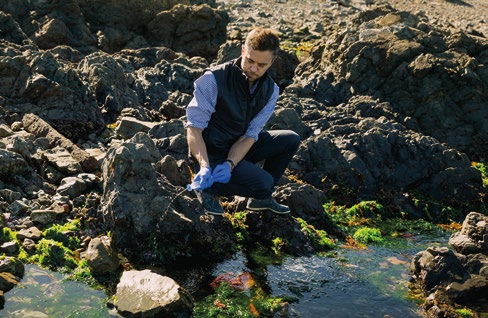
Using environmental DNA testing to find populations of native fish and other aquatic species, Shaun Wilkinson says only a couple of land-dwelling birds have been identified out of about 17,000 tests.
Wilderlab, which runs New Zealand’s only dedicated eDNA laboratory, started testing for kōkako DNA a year ago. It has already detected South Island kōkako DNA in the sediment at the bottom of Lake Paringa on the West Coast. Unfortunately, the samples date to the early 1800s. Now the technology is being used to find a live one.”
The first step was to prove the method by detecting a North Island kōkako. Volunteers have been taking samples from streams in Pureora Forest, which has the country’s largest kōkako population. If the bird’s DNA is in the cup-sized samples retrieved, then the analysis will find it, but so far the tests have come back negative. Wilderlab founder Shaun Wilkinson says birds are one of the most difficult species to detect as they leave so little DNA in the environment. About 90 per cent of fish species present can be detected within six samples, but for birds it can take more than 13 samples and Wilkinson is losing patience with funding the tests, which cost $150 to $250 each.”
“I don’t have any more budget to throw at it but if someone else came up with some funding then I’d be keen to be involved, for sure.”
THE SCEPTICS
Some say there’s a simple reason why none of these methods have found the bird — it became extinct long ago.
“I call it chasing rainbows,” Gerry McSweeney says. McSweeney has spent his life working in the South Island forest. In the 1970s and 1980s, he worked for the Wildlife Service in Arthur’s Pass and Westland national parks and was chief executive of Forest and Bird for a decade in the 1980s and early 1990s . He moved to Lake Moeraki, north of Haast, in 1989 and opened a lodge where he has run bird-watching tours ever since. The area is one of Rhys Buckingham’s “hot spots” for kōkako hunting and he believes he has seen the bird in a nearby valley, but McSweeney is adamant there is no trace of kōkako in his patch.”
“I don’t mean to be unkind, but frankly he’s just dreaming,” McSweeney says. “I’ve lived here for most of the last 33 years, I can identify every single bird that I hear, and the two places that Rhys thinks there are birds is the ridge behind my house and down on the coast where we go to look at penguins. And in that 32 years, I’ve never, ever heard a call or seen a bird that in any way could be like the South Island kōkako, and I’m out virtually every day.
“If there was something here that I was uncertain about, I’d be the first to put up my hand and say it might be South Island kōkako. But I think there’s been decades of searching for it and no credible evidence. Where’s the photograph, where’s the feather?”
Colin Miskelly is also unconvinced. He believes the encounters are more akin to UFO sightings than genuine evidence the bird exists.
“It does start to sound a bit like Roswell to me, and I don’t know what is driving this phenomenon. I’ve said this is a social phenomenon, it’s not an ornithological one, so really we need a social scientist to explain why people are seeing these birds now when they weren’t between 1900 and 1960.”
He says the fact that sightings are recorded the length of the South Island also makes it suspect.
“It doesn’t fit the pattern of any other New Zealand extinction. We know in some cases when people have claimed to have a video of the South Island kōkako it’s been a California quail, which is a grey bird of a similar size, but nothing like a kōkako.”
Lazarus Taxon
If the South Island kōkako were saved from the brink of extinction, it wouldn’t be the first species to reappear. Famously, the takahē was discovered in a single valley in Fiordland in 1948, 50 years after the last specimen was found. But there have been others dubbed “Lazarus taxon”.
The New Zealand storm petrel was last seen in 1850 and presumed extinct, but was rediscovered by birdwatchers in the Hauraki Gulf in 2003. Later they were found to be nesting on Hauturu/Little Barrier Island with a population “of hundreds if not thousands”, according to New Zealand Birds Online.
The Chatham Island tāiko, a kind of petrel, was thought to be extinct for a century but was rediscovered in 1978, after Whangārei ornithologist David Crocket doggedly searched for the bird and found it. There are thought to be fewer than 200 left.
Then there are the birds brought back from the brink. The South Island saddleback — a cousin of the kōkako — went extinct on the mainland by about 1900 but clung on in the predator-free South Cape Islands, of the southern tip of Stewart Island. By the early 1960s, rats finally made it to the island with devastating effect. By 1964, the Wildlife Service found only 36 saddleback left, which were transferred to pest-free islands and survived. There are now more than 2000 South Island saddleback on island sanctuaries.
In the 1970s, kākāpō were thought to be confined to a handful of birds in remote parts of Fiordland and apparently doomed to extinction. However, in 1977, kākāpō were discovered in southern Stewart Island for the first time, and 62 birds were transferred to pest-free islands in the 1980s and 1990s. The last surviving Fiordland kākāpō, Richard Henry, was discovered in 1975 when he was thought to be 45 years old. He died in 2010, but his genetics have been critical for the survival of the species.
Hihi/stitchbird were once widespread but became confined to Little Barrier Island by the 1880s and have clung on. About 2500 birds are thought to be on Hauturu with another 600 or so in six sanctuaries.
Internationally, a number of species have been rediscovered after being classified as extinct. In 2020, the black-browed babbler, a song bird, was rediscovered in Indonesia after it was last seen 172 years earlier. In 2019 a giant Fernandina Island Galapagos tortoise — a subspecies of the world’s largest tortoise — was found after it was thought to be extinct for more than 100 years.
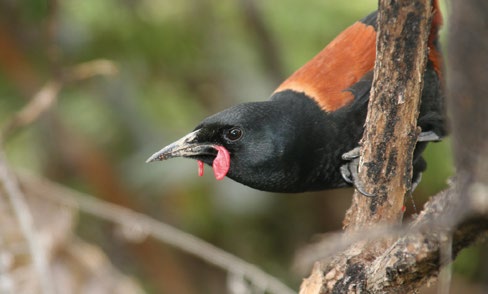
A RESURRECTION?
Even if the bird is gone, there might still be hope for the species. In the last couple of decades, the concept of de-extinction has progressed from something from science fiction to become technically feasible.
There hasn’t been a successful de-extinction yet, but University of Otago zoology professor Philip Seddon says it’s probably just a matter of time. Seddon is a world expert on de-extinction and led a “De-extinction Task Force” that developed guidelines for the International Union for Conservation of Nature. He says there are three main ways of bringing back a species. The first is cloning. Since Dolly the sheep was cloned in 1996, the technique has been successfully used on more than 20 species. In some countries you can even clone your dead dog for about $100,000 — Barbara Streisand has had her dog cloned twice.
It requires having a preserved cell from an extinct animal, which can be grown into a clone, effectively bringing at least one member of the species back. This was actually achieved in 2003 — sort of. In 2000, the last bucardo — a species of wild goat found in the Pyrenees — was found dead, crushed by a tree. Fortunately, scientists had earlier harvested and frozen some of its cells which were then grown and inserted into domestic goat egg cells and transferred into a dozen surrogate goats. Only one surrogate made it to term and on July 30, 2003, a bucardo was born, becoming the first species to be brought back from extinction. After 10 minutes, it became the first species to become re-extinct — the clone died due to a lung defect possibly caused by the cloning process.
Scientists haven’t successfully cloned an extinct animal since, although the technique has been used to help stave off extinction. In 2020, scientists in the US successfully cloned a black-footed ferret after the species had gone extinct in the wild in the 1980s. While captive breeding had helped revive the species, its population lacked genetic diversity. The clone was derived from cells preserved in 1987 and it is hoped this will inject more genetic diversity into the species, improving its chances of survival. Scientists are now attempting the technique to save the functionally extinct northern white rhino.
For the likes of the South Island kōkako, Seddon says the DNA from specimens will have degraded too much to be able to be cloned, but it might be possible to genetically engineer one back into existence. Using a technology called CRISPR-Cas9, scientists can effectively edit the DNA of a cell, cutting out genes and pasting in new ones. This means the genome of a closely related species can be edited to create a new animal that’s very similar to the extinct species. The edited DNA can then be inserted into an egg cell and grown in a surrogate, which would then give birth to the extinct animal. It wouldn’t be genetically identical to the extinct species, but it should look close enough.
“It gets us as close as we can get,” Seddon says. CRISPR-Cas9 has already been used to genetically engineer plants and animal cells, including human embryos. While it hasn’t yet been used in de-extinction, multiple projects are underway. In August, scientists announced plans to use CRISPR-Cas9 to bring back the thylacine, or Tasmanian tiger, by gene-editing the fat-tailed dunnart, the closest surviving species. While the dunnart is about the size of a mouse, scientists claim that because marsupials give birth to tiny young, the dunnart can still serve as a surrogate. Last year plans were revealed to edit elephant DNA to bring back the mammoth — or at least a hairy mammoth-like elephant.
Unfortunately, Seddon says cloning or gene editing birds is much more difficult because it is hard to insert the cloned or edited cells into a bird’s egg. Consequently, birds have never been cloned. However, Seddon says this obstacle might be overcome shortly as scientists are working to bring back the extinct passenger pigeon in the US by gene-editing a bar tailed pigeon to have passenger pigeon gonads. “Then, if you breed them they would produce a passenger pigeon, but no one’s done that yet.”
In theory, a North Island kōkako could likewise be “edited” to produce South Island kōkako-like offspring. Seddon says this will probably become possible in the near future.
More primitively, selectively breeding a closely related species can also be used to bring back the traits of an extinct species. For example, it may be possible to breed North Island kōkako to have orange wattles. There are, however, ethical issues with bringing back the dead. Some view de-extinction as “playing god”, while others believe it will make humanity lackadaisical about saving endangered species. Seddon questions whether re-engineering a South Island kōkako can be justified when so many of our species remain threatened with extinction.
“Is it really the biggest conservation challenge that we have in New Zealand that we should be devoting time and effort towards?”
He believes de-extinction can be justified when the extinct species played a vital role in an ecosystem that hasn’t been filled in its absence. But in the South Island, it would be easier to simply introduce the North Island kōkako, which has made a remarkable recovery from just 300 breeding pairs in the 1990s to 2000 pairs last year. This has actually been tried, and failed. In 2008–09, 27 North Island kōkako were transferred to Secretary Island in Fiordland but they were wiped out four years later after a spike in pest numbers.
Attempts to reintroduce South Island saddleback to the mainland have likewise failed. About 80 birds were translocated to Orokonui Ecosanctuary near Dunedin in 2009 and 2013 after about 100 years of being relegated to offshore islands. However, in the winter of 2015 a single stoat was detected in the sanctuary and proved particularly hard to eradicate. By the time the stoat and its two offspring were killed in November, all of the sanctuary’s saddlebacks had been eaten.
Which begs the question, even if we can find a few kōkako that have survived — or genetically engineer some back into existence — will they be able to thrive in the wild when the predators that caused their demise still roam?
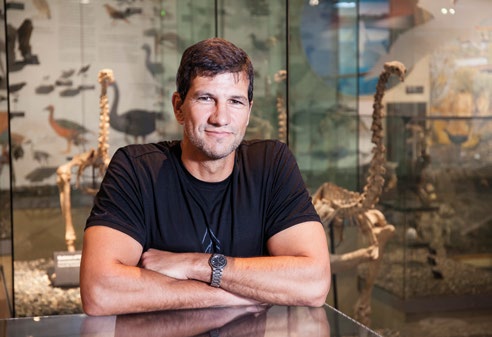
Philip Seddon is “optimistically sceptical” the South Island kokako survives. “There’s a lot of wild country out there, but they’re pretty visible, noisy birds.” Photo courtesy University of Otago.
Promisingly, takahē have been released on the Heaphy Track — the only wild population outside of Fiordland — and have thrived. In future, it may also be possible to use CRISPR-Cas9 to genetically engineer pests to be infertile, to wipe them out, although this seems even more ethically fraught than de-extinction.
Buckingham thinks time is running out. While he believes a few individual South Island kōkako survive, he now thinks the future of the species is probably “stuffed” due to the number of pests he encounters on his kōkako expeditions. “It’s reached the stage that I’m quite dubious that it [saving the species] can be achieved. I’m feeling like an absolute failure on this. I love the bush and it’s an excuse to get out, but we might have lost out trying to save this bird.”
He says the last hope is a project to eradicate pests from Stewart Island, where he first saw a kōkako 40 years ago and where a relict population might still cling on. “But it still requires a leap of faith to think there may be enough South Island kōkako there to breed and thus restore the population.”
By noon, the initial euphoria of my kōkako hunt began to fade. I had continued up the Blue River valley, stopping occasionally to play a recording of a juvenile North Island kōkako which Stephen Marsland suggested might lure the bird. It sounded more like a rusty gate than an aeolian harp to me. As I began to tire, something Buckingham told me came to mind: “Once you hear a South Island kōkako, your life changes.” As the track petered out into a slip beside the snowmelt-swollen river, this began to sound more like a warning than an exhortation. I started to hear another call, from within, saying “stop chasing ghosts and go home”.
Looking around, the forest seemed endless. Even if the kōkako were here in this small valley, I felt the chances of anyone seeing the bird were slim. But in a country which has lost so much, the lure of resurrecting one last species is hard to quell. I sat down on the river edge, closed my eyes and repeated my mantra, alone in the forest, listening for a bird that may not exist.
George Driver is North & South’s South Island correspondent. This role is made possible by support from NZ On Air’s Public Interest Journalism.
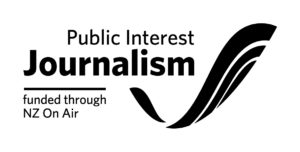
This story appeared in the January 2023 issue of North & South.


